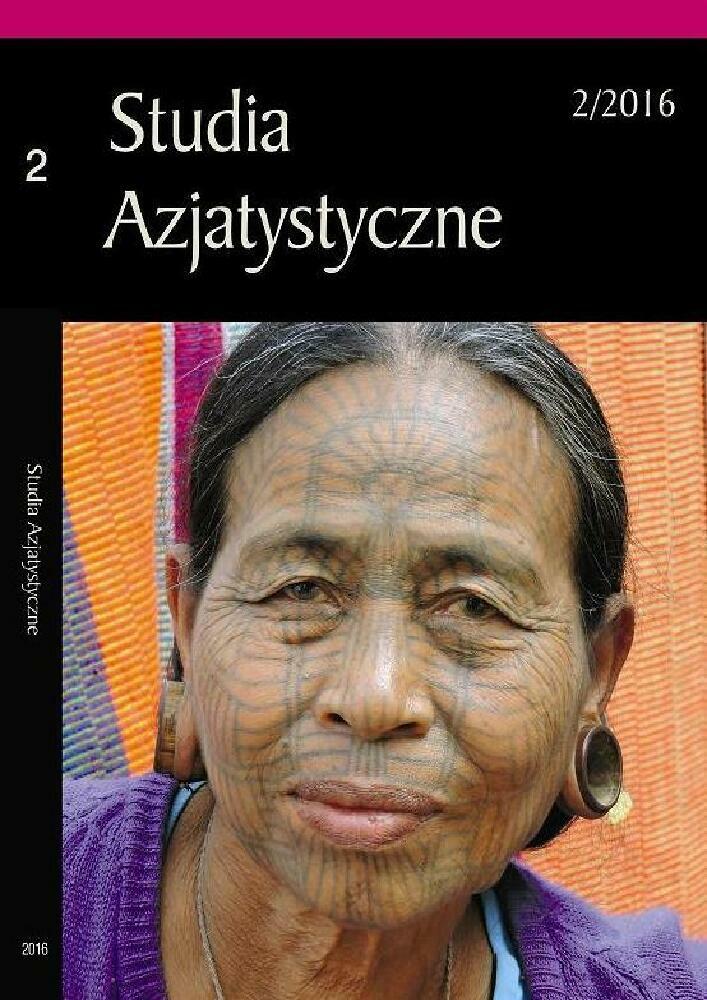Abstrakt
The objective of this paper is to identify and define the main differences in modern Western and Classical Indian approaches to the theory of art, and by extension to the work of art itself. It is important in research on the history of art to avoid a cultural bias resulting from different theoretical approaches towards art and the basis of visual culture. Three main areas are examined: the classification of art or art disciplines, the theory of the senses and strategies in the perception of art. The first part analyses concerns about the origin of art, its boundaries and inner divisions. This serves top identify the scope of the Field of Art, connections between disciplines (theatre, music, painting, sculpture, etc.), and their position in the Art World. The following Sanskrit treatises serve as a basis: Nāṭya-śāstra, Kāma-sūtra, Viṣṇu-dharmôttara-purāṇa. A significant distinction can be found in the theory of the senses. Based on Saṃyutta Nikāya, Nyāya-sūtra, Vaiśeṣika- sūtra, etc. classical concepts of sensual perception and their roles are examined, with special emphasis on the position of the mind (manas) as a sixth sense or inner organ linked to senses. With that background, a brief analysis of the theory of taste (rasa), including the roles of emotion (bhāva) and mind (manas), is presented.Bibliografia
[Bharata]. 1934. Nāṭya-śāstra with the Commentary of Abhinavagupta. Baroda: Oriental Institute.
Bourdieu, Pierre. 2005. Dystynkcja. Społeczna krytyka władzy sądzenia. Warszawa: Wydawnictwo Naukowe Scholar.
Dreyfus, Georges, Evan Thompson. 2007. Asian Perspectives: Indian Theories of Mind: P. D. Zelazo, M. Moscovitch, E. Thompson (red.). Cambridge Handbook of Consciousness. Cambridge: Cambridge University Press, 89-114.
Ghosh, Manmohan. 1957. Nandikeśvara’s Abhinayadarpanam. A Manual of Gesture and Posture Used in Hindu Dance and Drama. Tłumaczenie: Nandikeśvara. Calcutta: Firma K. L. Mukhopadhyay.
Ghosh, Manomohan. 1967. The Nāṭyaśāstra. Completely Translated for the First Time from the Original Sanskrit with an Introduction, Various Notes and Index, vol. 1. Tłumaczenie: Nāṭyaśāstra. Calcutta: Manisha Granthalaya.
Haas, George C. O. 1912. The Daśarūpa. A Treatise on Hindu Dramaturgy by Dhanaṁjaya. Tłumaczenie: Dhanaṁjaya. New York: Columbia University Press.
Kramrich, Stella. 1928. The Vishnudharmottara (Part III). A Treatise on Indian Painting and Image-Making. Calcutta: Calcutta University Press.
Lidova, Natalia. 2013. Rasa in the Nāṭyaśāstra – Aesthetic and Ritual, Indologica Taurinensia 39, 187-212.
Nardi, Isabella. 2006. The Theory of Citrasūtras in Indian Painting. A Critical Re-evaluation of their Uses and Interpretations. London: Routledge.
Obolevitch, Teresa. 2014. Estetyka w rozumieniu Władysława Tatarkiewicza i Aleksego Łosiewa. Próba analizy porównawczej, Przegląd Filozoficzny – Nowa Seria 2 (2014), 59-69.
Pandey, Kanti Chandra. 2008. Comparative Aesthetics. Vol. I: Indian Aesthetics. Varanasi: Chowkhamba Sanskrit Series Office.
Schapiro, Meyer. 1994. Theory and Philosophy of Art: Style, Artist, and Society. Selected Papers. New York: George Braziller.
Sen, R. K. 1966. Aesthetic Enjoyment. Its Background in Philosophy and Medicine. Calcutta: University of Calcutta.
Shastri, Surendra Nath. 1961. The Laws and Practice of Sanskrit Drama, book 1: Laws of Sanskrit Drama. Varanasi: Chowkhamba Sanskrit Series Office.
[Watsjajana, Mallanaga]. 1985. Kamasutra – czyli Traktat o Miłowaniu. Tłum. M. K. Byrski. Warszawa: Państwowy Instytut Wydawniczy.
Źródła internetowe
Watsjajana, Mallanaga. 1900. Kāmasūtra with Commentary of Yasodhara. Nirnayasagarayantralaya, http://kjc-fs-cluster.kjc.uni-heidelberg.de/dcs/index.php?contents=texte
Licencja

Ten utwór jest dostępny na licencji Creative Commons Uznanie autorstwa 4.0 Międzynarodowe.
